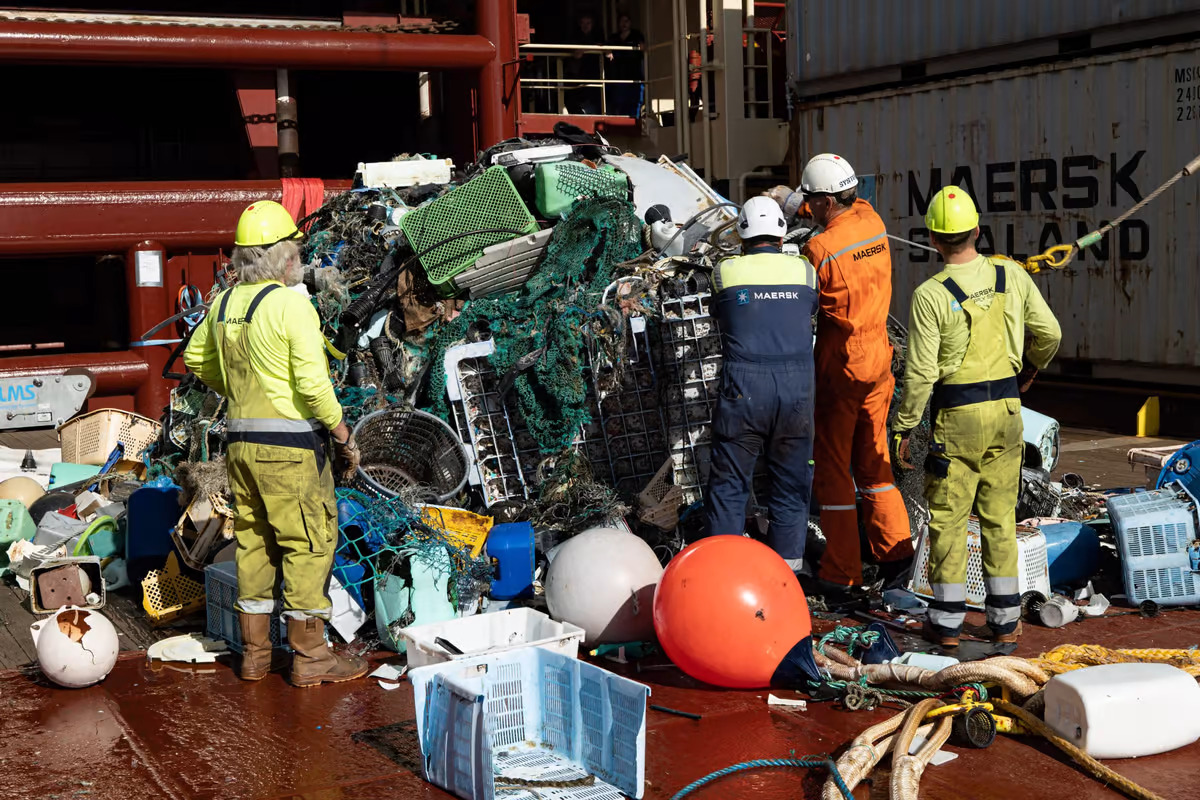 Much of the debris consists of items such as buoys, floats, crates and buckets. The Ocean Cleanup.
Much of the debris consists of items such as buoys, floats, crates and buckets. The Ocean Cleanup. –
Ben Coxworth
When most people think of the Garbage Patch, they likely picture it being full of “land-dumped” trash such as plastic bottles, bags or product packaging … and such waste does reportedly make up the majority of marine plastic pollution in general, as it’s carried by rivers into the sea.
When it comes to what makes up the GPGP specifically, however, the Ocean Cleanup project has just announced that 75% to 86% of the plastic comes from offshore fishing activity. These figures are based on the analysis of over 6,000 hard plastic objects measuring over 5 cm (2 inches) in size, that were collected by the project in 2019. While these items included things like buoys, floats, crates and buckets, it should be noted that nets and ropes were not counted in the survey.
So, why the predominance of fishing gear?
The study states that thanks to wind patterns and ocean currents, “plastic lost at sea has a higher chance of accumulating offshore than plastic emitted from rivers, leading to high concentrations of fishing-related debris in the GPGP.” It was additionally found that based on brand names, printed text language and other clues, the majority of the items likely came from Japan (34%), China (32%), the Korean peninsula (10%) and the US (7%).
“To stop the inflow of plastic into our oceans, addressing river emissions – the largest source – must remain core priority,” said Slat. “However, to ensure our work to clean up the GPGP is truly sustainable, fishing gear inputs must also be stopped. We hope our latest study will enable organizations and the fishing industry itself to address this other source of plastic pollution [in] the GPGP.”
A report on the project’s findings has been published in the journal Scientific Reports.
Source: The Ocean Cleanup









Most Viewed
Contra-rotating floating turbines promise unprecedented scale and power
Six-sleeper pop-up electric catamaran RV glamps on land or sea
New discovery reveals how sugar disrupts gut bacteria, leading to obesity
Researchers discover new way fat cells talk directly with the brain
Increased risk of stroke in adults linked to certain blood type
MIT’s Mars oxygen factory is now matching the output of a small tree
Infrared laser charger wirelessly beams power to devices 100 ft away
James Webb captures Phantom Galaxy’s spectacular spiraling arms
Review: 2022 Chrysler Pacifica is still the minivan benchmark
Aluminum-gallium powder bubbles hydrogen out of dirty water
Why Russia’s cyber war in Ukraine hasn’t played out as predicted
Hydrogel glass windows let in more light and less heat
Study debunks “stoner” myth that cannabis users are lazy & unmotivated
A deeper dive into World Wide Wind’s colossal, contra-rotating turbines
James Webb snaps its first direct image of an exoplanet